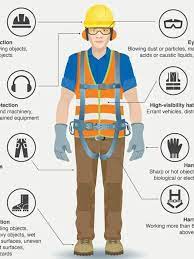Table of Contents
Body Armor and Protective Clothing
Body armor acts as a frontline defense against hazards that could cause physical injuries. Employees in professions such as law enforcement, security services, and construction find it particularly beneficial. One type of body armor commonly used is Kevlar vests, which offer robust protection against threats like bullets and sharp objects.
On the other side, protective clothing plays a pivotal role for individuals working in potentially harmful environments. For instance, a chemical laboratory necessitates the use of lab coats to prevent direct contact with dangerous substances. Firefighters wear heat-resistant suits to shield themselves from extreme temperatures during operations. Thus, body armor and protective clothing go a long way in ensuring worker safety.
Foot and Leg Protection
Foot and leg protection form a critical aspect of PPE in various industries, including construction, logging, and fishing. Steel-toe boots offer significant protection against heavy falling objects, preventing severe foot injuries. Boots with cut-resistant features guard against sharp objects that could pierce regular footwear.
Further, slip-resistant shoes are of utmost importance in environments with slippery floors, such as restaurant kitchens, ensuring workers maintain stable footing. For professionals engaged in tasks involving a lot of kneeling, such as flooring or roofing, leg guards and knee pads offer significant protection and comfort.
Head Protection
Head protection holds an irreplaceable position in many professions. Helmets and hard hats provide a protective barrier against hazards like falling debris, impacts, and even electric shocks. Commonly observed at construction sites, mines, and locations with overhead utilities, these pieces of PPE are fundamental in preventing head injuries.
Eye and Face Protection
The eyes and face are often exposed to numerous hazards in various work environments. Safety glasses provide reliable protection against flying particles, hazardous splashes, or intense light, safeguarding the eyes from potential harm. Full-face shields offer additional protection during tasks such as welding or when handling harmful substances.
A versatile protection mask deserves special mention in this category. This unique piece of PPE not only shields the respiratory system from harmful particulates but also offers robust protection to the face, serving a dual purpose.
Hearing Protection
In work environments characterized by high noise levels, hearing protection is non-negotiable. Continuous exposure to loud noise can culminate in irreversible hearing loss. Earplugs and earmuffs, common types of PPE in this segment, significantly reduce the level of noise reaching the eardrums. These are indispensable for professionals in sectors like manufacturing, construction, and music.
Hand and Arm Protection
Various jobs put workers’ hands and arms at risk due to sharp objects, extreme temperatures, chemicals, and a plethora of other hazards. Gloves form a simple yet highly effective solution to these risks. There are specialized gloves for different scenarios – cut-resistant ones for butchers, insulated ones for electricians, and chemical-resistant gloves for lab technicians, each uniquely designed for the respective profession.
Respiratory Protection
Respiratory protection is essential in environments where poor air quality could pose health risks. Dust masks protect against particulates, while respirators shield from harmful gasses and vapors. Healthcare professionals often resort to surgical masks and N95 respirators to protect against airborne pathogens.
Conclusion
PPE is available in a wide range of forms, providing all-encompassing protection against a multitude of hazards. It spans from head and body protection to leg protection and even includes protective wear for the respiratory system. The key to safety is choosing the right PPE for a specific job and using it correctly. This ensures maximum protection, contributing to a safer work environment. Remember, safety should always be a priority!
















